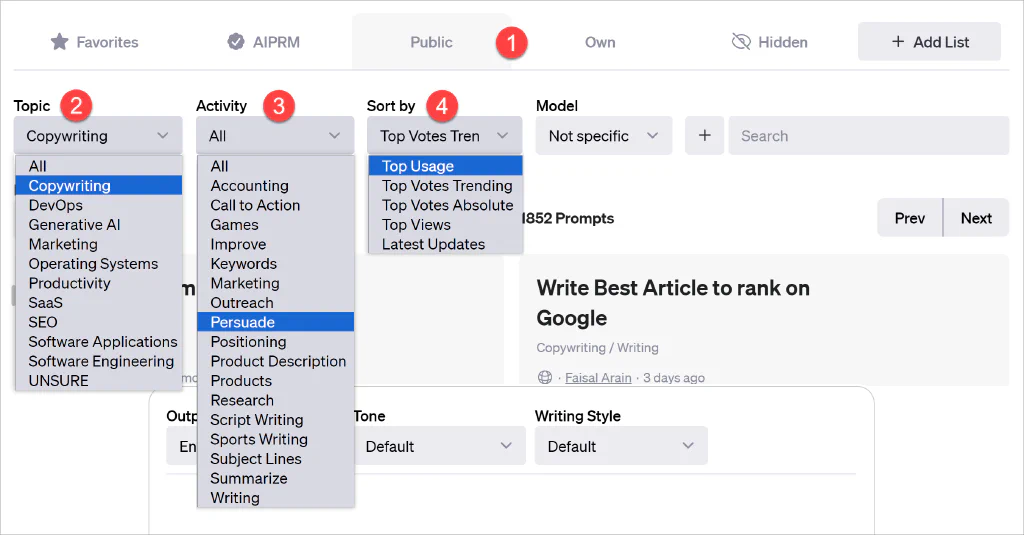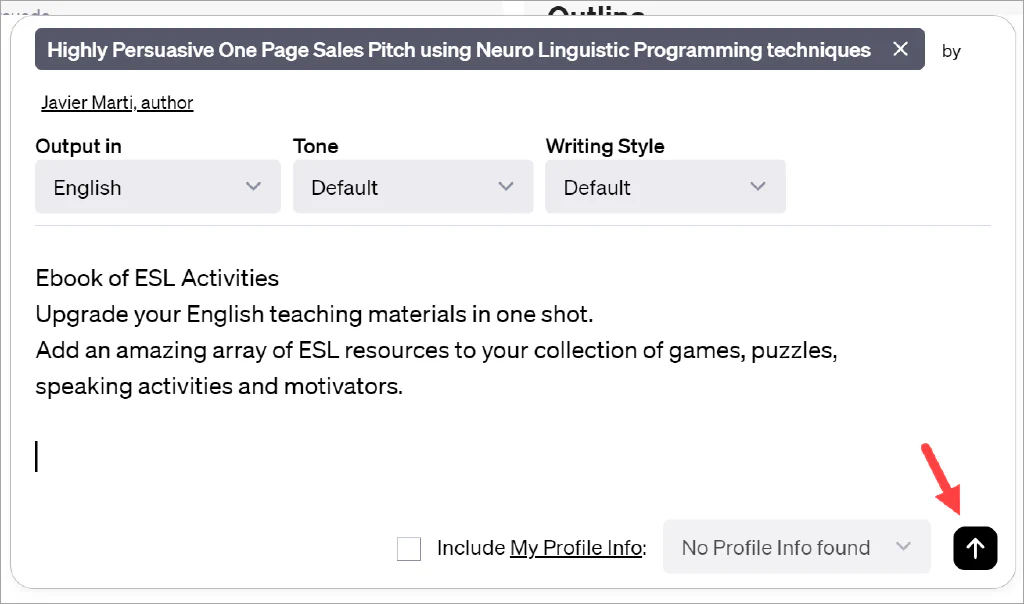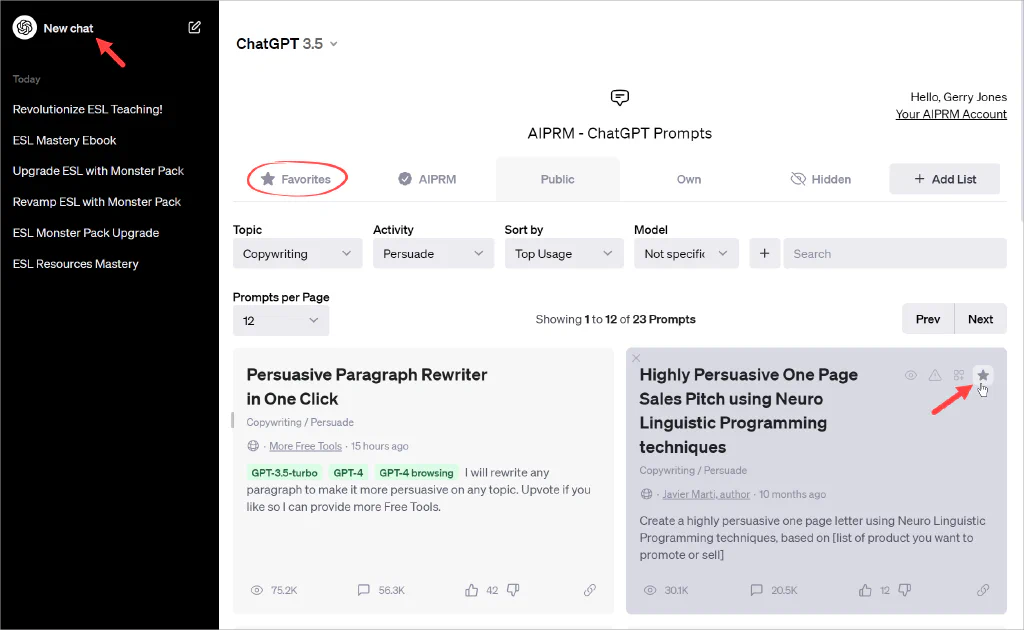Run Your First Prompt
See AIPRM in action from start to finish.
In this article, you learn how to:
- select a topic and activity
- choose a prompt
- generate text
- start over with a different prompt
- save prompts
Selecting an activity #
Log in to your ChatGPT account.
- Click the Public tab.
- Click the Topic field and select an option.
- Click the Activity field and select an option. The options you see here change depending on your Topic choice.
- Optionally, click the Sort by field and select a filter.

Choosing a prompt #
Based on your filter selections, the page displays a series prompt options. Scroll through the list and find one that matches your needs.
Click an option. The prompt title appears in the input field.

Generating text #
Go to the Input field and enter a word, phrase, or more. Click the arrow to launch the AI.

Review the text.

Starting over #
Running a new prompt is fast and easy. Click the New chat link in the top left corner. The page resets. You can use the same prompt with different text in the Input field or start again fresh.

Saving your favorite prompts #
When you find a prompt that really works well for you, go to the prompt and click the star icon. AIPRM adds that prompt to the Favorites library. Next time, click the Favorites tab to display your saved prompts. That’s faster than using the search tool.
Related articles #
To learn more about building your own detailed prompts that generate fantastic results, see: